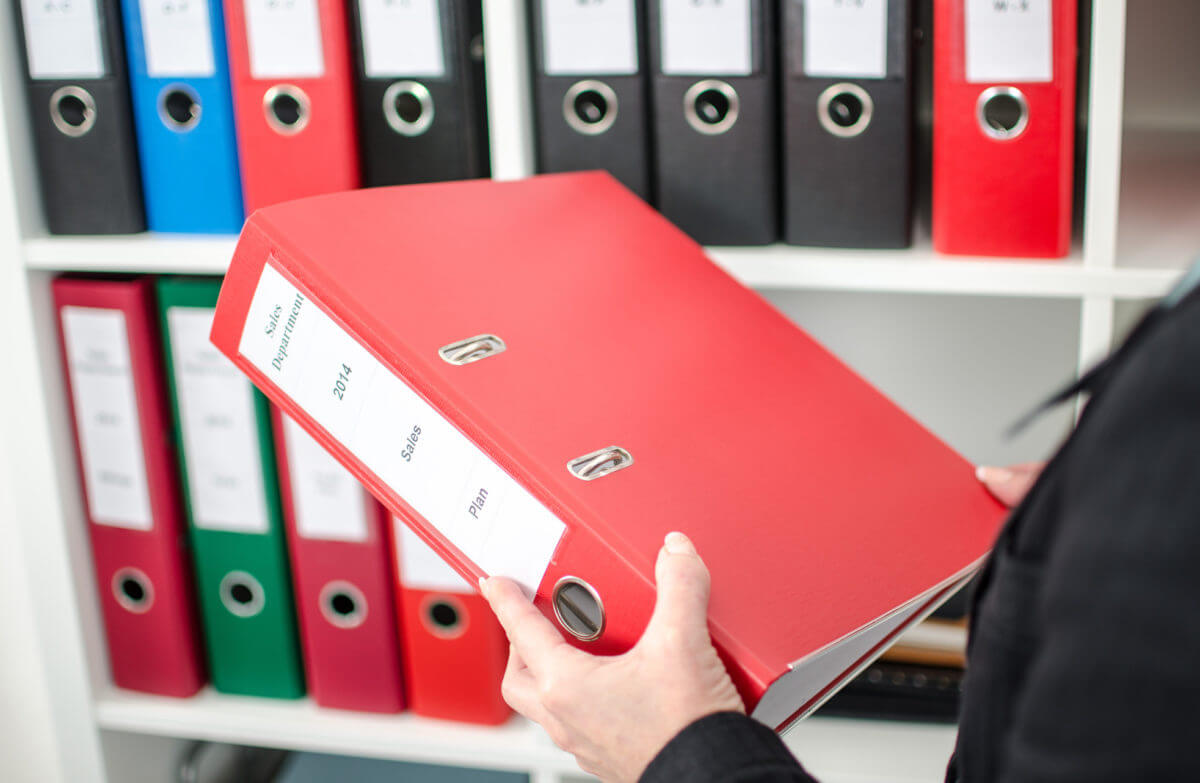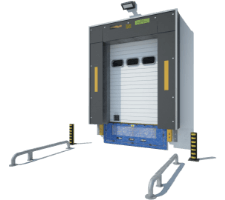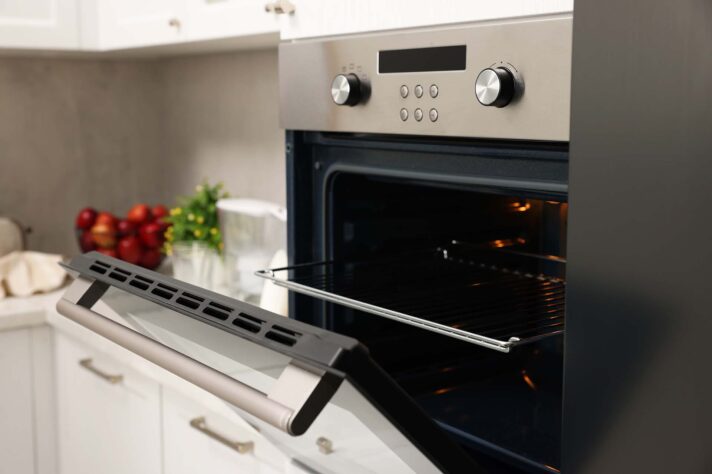Create a moving binder by going through all the necessary tasks you should accomplish in order to have a successful relocation. These tasks should be organized in certain order and categories, so it can be easier for you to plan and track the whole process step by step. This folder should contain various lists – for shopping, packing, decluttering, and so on, allowing you to stay focused on all the different tasks during the relocation process.
How to Create and Organize a Perfect Moving Binder
A relocation process can easily turn into a chaotic horror movie if you don’t have a well-prepared moving binder to keep you on track with your tasks. With this short but comprehensive guide, we’ll show you how to create a perfect one that will save you from making unnecessary relocation mistakes and help you stay focused and organized.


Organize a Perfect Moving Binder and Plan Your Home Relocation Like a Pro With Our Convenient Tips
Want to move efficiently and ensure you’ll have a stress-free relocation? All you have to do is prepare a good moving binder organizer and keep all your lists, important documents, schedules, shopping planners, and expenses in one place. The relocation process doesn’t have to be complicated or chaotic at all – as long as you keep track of everything and preferably keep all the important stuff in one comprehensive folder.
This Planner Kit Can Contain Printable Checklist With All the Important Tasks
One of the most helpful tools for keeping track of your actions is making a printable checklist or even several of them. For example, you can have a checklist for:
- Packing materials,
- Stuff that you have to get rid of,
- People you have to notify you’re relocating,
- Household inventory,
- Stuff you need for your new apartment,
- Relocation essentials,
- Expenses list.
Checklists are not only good tracking tools, but they also have a certain psychological impact on your motivation while going through a challenging period. The act of “checking” every important task in front of our eyes and seeing how the list goes shorter keeps us going and motivates us to finish other upcoming tasks.


You Can Organize Your Tasks In Different Categories
One of the coolest things about binders is that you don’t have to include everything in one simple list. Moves are complex and include many various tasks that are often completely different from each other. For example, cleaning your house, calling a babysitter, and buying packing paper can all be on one listing, but you’ll get a much better sense of your tasks if you separate them into categories.
For example, buying paper can be on your supplies shopping agenda, but this list should also be separate from the future apartment shopping wishlist. Now that you understand how this organization system works, we can offer you some generic and more specific categories that you can include in your folder.
#1 Current Home Plan
Your current home plan should include everything you have to do while you are preparing to leave it and move somewhere else. For example, you should have a whole inventory listing, so you can decide what to do with all the items, what you’re going to get rid of, and what you are relocating to your future house.
You can also decide to keep some stuff in storage so it can be moved later or maybe sell some of the items that are still in good condition. You can have a separate planner for a garage sale and note all the items you want to sell as well as how much you earned for each of them. Here are some other categories you should include:
- Organized checklists for every room,
- Utility cancellation tracker,
- Important contacts,
- Relocation supplies shopping agenda.
Organized Checklist Room by Room
You should know that different rooms in our house require different activities when preparing for relocation. For example, bedrooms usually take a lot of time to declutter because of all the clothes you keep there. On the other hand, even though a bathroom doesn’t have a lot of inventory, it sometimes takes the most to clean. The kitchen can also take you a lot of time, depending on the type of dishes you have there.
Boxing fragile china requires a lot of time and patience, as well as using some quality protective materials. This is why you should examine every room in your house and mark every task you should handle around it before the move. For example, if you notice that a wall plug in your bedroom is broken, write that you have to repair it as one of the tasks for this room.
Make a Utility-Cancel Track
Even if you have a large relocation budget, you probably don’t want to waste your money on paying utilities for two places at once. As soon as you find enough reasons to move and a dream house you’re going to relocate to, you can plan on canceling utilities for your old address and start transferring them to your future one. Changing your address is a very important step in the relocation process, and you can officially change it in advance by selecting the precise date of your move.
Organize Important Contacts in Binder
You should also ensure that you have all the important contacts in one place. For example, if you plan on hiring a professional cross-country moving company, you should have their number here. Contact them in advance to book desired dates for your relocation.
Also, ensure to call the chosen long-distance moving company if you have any questions about items cross-country movers won’t move or anything else that’s related to your upcoming move. Here you should also have a number from the babysitter you’re booking for the relocation dates or the cleaning company whose services you’re getting. If you have them all together, you can easily reach out to them in case you have to change some details about the time and date of their services.
Setup a Moving and Packing Supplies Shopping Listing
Once you start going shopping for relocation supplies, you should at least have some idea about the items you plan to relocate. Otherwise, you won’t be able to buy the right materials, buy the wrong ones, or make mistakes with the number of supplies. In order to avoid these relocation mistakes, the best solution is to get professional cross-country moving services.
If you get professional packing services, they’ll know exactly what and how many supplies they have to use depending on your inventory listing. Professional long-distance movers also have modern equipment, so there is no need to worry if you let them pack your fragile items.
#2 Important Inventory
One of the most significant things to do when relocating is keeping track of your valuable and important inventory, such as:
- Important documents,
- Jewelry,
- Antique objects or emotionally valuable items,
- Essentials box.
These are the objects you should keep in your sight throughout the relocation process and preferably all in one place, so it would be easier for you not to lose anything significant. Make sure to have all the travel and health documents as well as important contracts and certificates by your side in case you need any of these during and shortly after the relocation process is over.
Essential items are also very important to bring (even if they don’t have high emotional or financial value), at least for the first day at your new house. Box with essentials should include some:
- Clean clothes,
- Towels,
- Bed sheets,
- Toiletries,
- Chargers,
- Medicines,
- Some extra food in case you’re relocating with pets.
Have a Non-Pack Inventory Listing as Well
You can also make a separate non-pack inventory list – stuff you are not planning to relocate. These can be some bulky items you don’t want in your future apartment, stuff you find useless, or you simply feel like they are worn out, so you want to buy different pieces.
No matter the case, once you have a listing of these objects, you can easily decide what to do with them. For example, you can choose to donate furniture, keep it in storage, sell it, give it to someone or simply dispose of it if it doesn’t have any purpose or value.
This video can give you some cool decluttering ideas and help you organize this process efficiently.
#3 New Home Plan
When making lists for your future home planning, there are some things you should take into consideration:
- Measurements,
- Furnishing,
- Inspection listing,
- Shopping listing for every room,
- Utility setup plan.
First of all, you want to know all the precise measurements of your future home, so you can plan all the other activities. How can you know what furniture pieces to move or buy if you don’t know if they are going to fit there? You also have to find out what pieces of furniture are already inside your home. This is especially important if you’re renting a place – many people rent apartments with some pieces of furniture already inside, so there is no need for you to bring your stuff as well.


Inspection Checklist – Step by Step
Once you walk into your apartment, you also want to examine every corner of it to see if everything is working properly – washing machine, taps, switches, locks, heating, and so on. If you notice anything is broken or non-functioning properly, you should definitely notify your landlord about it. Otherwise, you risk paying for repairs from your pocket as if you were the one responsible for the damage.
New Apartment Shopping Plan – Don’t Leave Out Anything That You Find Significant
Once you are done with the inspection, you should clean everything before setting up the furniture and decoration and use a shopping listing for every room. For example, you’ll probably need to buy some chemicals and cleaning supplies you previously got rid of before the relocation. You can also decide that you need new shower curtains for your bathroom and so on. This video might give you some ideas on items to buy for a new apartment.
#4 Timelines and Schedules
Finally, you should also make a section with a schedule and deadline where you will organize everything week by week until the relocation date arrives. For example, boxing your storage and garage inventory can be scheduled for the first week of your preparation, then you should also look for professional long-distance moving services and check for the available cross-country moving companies.
During the last week, you should plan the cleaning and repair activities and leave the packing of essential items for the last day. Make moving organization binder printables for every week, and you can easily keep track of your progress over time.

Auto Transport
Cross Country Moving Company is the most trusted name in auto industry in the country.
Moving Insurance
Cross Country Moving Company is the most trusted name in the relocation industry in the country.

Storage
Cross Country Moving Company is the most trusted name in auto industry in the country.
Hiring Professionals When Moving Cross Country Can Make the Whole Process Much Easier
Following our relocation guide and folder organization tips will definitely help you out during this challenging process, but there is something even better you can do for yourself – hiring professionals. With a professional cross-country moving service, you can feel confident knowing that you’ll move safely and that all of your belongings will be relocated to your new home without any damage. You can also ship your vehicle with professional services and ensure you don’t have to drive it all the way across the country yourself. You can also get a free quote if you’re curious about potential expenses, so there’s literally nothing to lose.






